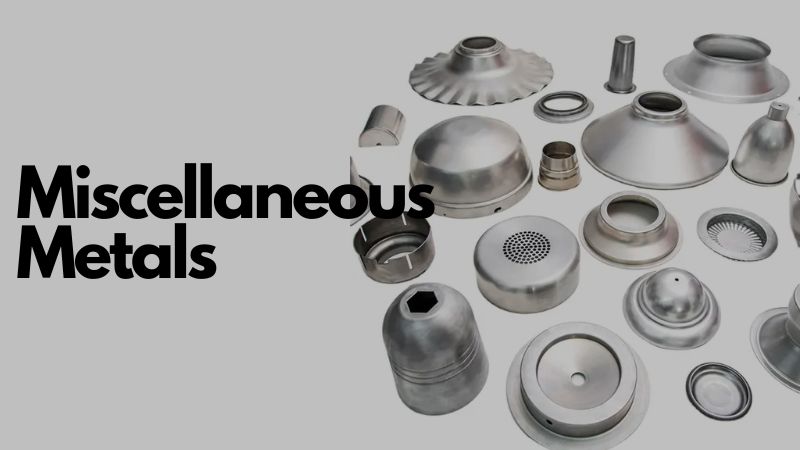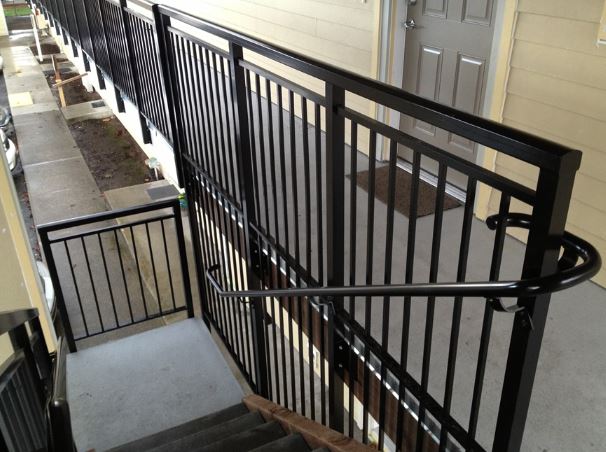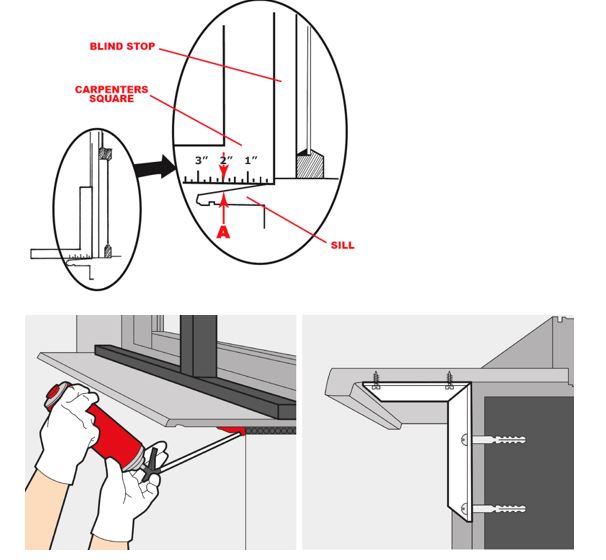
I know you are probably wondering what miscellaneous metal are. Or, you would like to know where to use the miscellaneous metals.
In this guide, you will find all information you are looking for about metals. Whether you want to learn about classification criteria, example, benefits or application – this is the right guide for your project.
Keep reading.
Types of Miscellaneous Metals
There are many ways you can classify metals. Let’s look at some common options:

Railings
Railings are a sequence of bars anchored on upright posts. We interact with railings almost daily. That simply explains how essential they are.
Application of Railings
The installation of the railing is mostly on:
- Staircases
- Ramps
- Balconies or pouches
Advantages of Railings
The key advantages of railing include:
- Preventing nasty falls when climbing up a staircase
- Give you balance when carrying heavy loads up the staircase.
- To prevent you from slipping by providing support and balance.
- Act as a hedge for your balcony or pouch.
Limitations of Railings
Railings will be ineffective if they do not adhere to the construction regulations. These regulations will dictate the height and the spacing of the railing.
Secondly, purchasing a substandard railing will also affect the effectiveness of the railing.

Sill Angles
A sill is the base part of a window. Though basic, the sills ensure the window is fully functional.
However, we consider a sill ineffective if it does not have proper angling. Consequently, you must install sill angles for correct angling.
Application of Sill Angles
Sill angles help in ensuring the windowsills sit at a correct angle.
Advantages of Sill Angles
Properly fitted sill angles prevent rainwater from sitting on the sill. The sills can rust if they accumulate rainwater.
Disadvantages of Sill Angles
The disadvantages of sill angles arise from imprecise installation. These include:
- The sill directs rainwater into your home.
- Inability to lock the window.
Importantly, a sill angle should slant the sill away from your home. However, it should not raise the sill too much to prevent the window from locking.

Relieving Angles
Relieve means to aid or support. Ideally, the relieving angles take up the weight of a system within a construction.
Applications of Relieving Angles
The key application of relieving angles is in masonry projects.
Advantages of Relieving Angles
Relieving angles help maintain the structural integrity of your construction project.
Disadvantages of Relieving Angles
- Inadequate waterproofing will result in quick rusting of the relieving angles.
- If there was improper detailing of the relieving angles during installation, future repair or replacement will be inevitable. Repair or replacement of relieving angles is quite costly.

Lintels
A lintel is a supporting component fitted in an opening on the wall.
The main types of lintels are:
- Loose angle lintels – These types of lintels are installed without any lateral support.
- Combination lintels – These are a cluster of angle lintels
Applications of Lintels
Lintels are used in masonry projects. However, the type of lintel will dictate its application as shown below:
- Loose angle lintels – Used in either cavity wall or brick veneer construction.
- Combination lintels – Used in solid masonry walls
Advantages of Lintels
- Lintels support loads above the opening in which it is installed.
Disadvantages of Lintels
- If the structural design of the lintel was not accurate, the lintel will cause structural cracks in your project.

Metal Inserts
Metal inserts are all the metal components fitted on the slab of a structure. Examples of metal inserts include:
- Pipe hanger slots
- Pipe openings
- Electric Conduit and junction boxes
- Vertical pipe openings
- Hung ceiling support
Application of Metal inserts
The application of the insert will vary depending on the type. For example, pipe hanger slots are used in securing pipes while hung ceiling support anchors the ceiling.
Advantages of Metal Inserts
Inserts allow for quick and secure installation of structures such as ceilings, pipes, and electric cables.
Also, inserts offer firm anchorage to the parts they hold.
Disadvantages of Metal Inserts
Inserts may result in cracks in the structure if installed inappropriately.

Supports
Similar to inserts supports allow for the suspension of structural elements. Additionally, supports allow for the movement of the elements.
Supports are classified into the below main categories:
- External supports – For example roller, hinged, and hanger support
- Internal supports – Such as hinges and internal rollers
Application of Supports
Typically, supports are used in various construction projects depending on the need.
For example:
- Suspending a bridge using cables is hanger support in action.
- Also, you can strategically install spring supports to counter deflection if you project expansion of the structural members.
Advantages of Support
Internal supports such as hinges allow for the movement of structural members to counter any forces resulting from reactive stresses.
Most external supports transfer the weight of heavy structural members. This helps in maintaining structural integrity.
Disadvantages of Supports
- Replacing the supports can be costly.
- Fixed supports hinder any movement of the attached structural members.
- You may need to install more than one support to achieve efficiency.

Miscellaneous Metals Fabrication Definition
Having the knowledge of fabricating miscellaneous metals is essential in understanding miscellaneous metals.
In this scenario, fabrication is the process of manufacturing misc. metals. Owing to the complexity of this process, most contractors outsource fabricators.
Miscellaneous metal fabricators work with quotes from contractors. As such, a contractor needs to know the specific miscellaneous metals he/she needs.
Notably, various projects/ applications require misc. metals. As such, most fabricators give room for customizing the misc. metals as per your requirement.
Ideally, you can fabricate all materials to make miscellaneous metals.
More Resources:
Sheet Metal Fabrication – Source: KDM
Architectural Sheet Metal Fabrication – Source: KDM
Precision Sheet Metal Fabrication – Source: KDM
Choosing A Fabricator for Your Miscellaneous metals.
As mentioned earlier, there are several misc. metal fabricators. Consequently, you will need to do your due diligence before settling on a fabricator.
An ideal fabricator should offer:
- Customization option
- Coating option
- Open communication
- Design Assistance
- Safety (resulting from proper fabrication).
- Quality control.
Importantly, you have the option of hiring multiple fabricators. Having more than one fabricator helps with:
- Meeting a tight construction deadline.
- Ensuring that you do not lack any misc. component.
Note: Misc. metal fabrication requires construction knowledge. It follows that a fabricator with vast construction knowledge will be of more use to you and will ensure you get quality misc. metals.
Ensure that your miscellaneous metals are fabricated as per the standards of your locality. An example of an international standard is the AISC Code of Standard.
At KDM, we are a trusted Msc. Metal fabricators in China you can trust.
Materials Used In The Manufacture Of Miscellaneous Metals
You can use various materials in manufacturing miscellaneous metals. The common materials include:
- Stainless steel
- Cold rolled steel.
- Aluminum
- Copper
However, you can only use specific grades of the above materials in the manufacture of misc. metals.
When choosing materials for misc. metals, consider the below:
- Grade – Your fabricator can advise on which grades of the specific metal they are able to fabricate.
- Application– If you are going to use the misc. metal in a hidden part of the construction it doesn’t need a highly aesthetic material, and vice versa.
- Cost – Liaise with your fabricator to help you choose material within your construction budget. However, this does not mean you go for quality grades of a metal material.
Importance Of Miscellaneous Metals
Miscellaneous metals are important in small, medium, and large-scale constructions. Additionally misc. metals are also useful when upgrading or carrying out maintenance on structures.
Some key applications of misc. metals are in:
- Placement – Including the placement of Logos in structures.
- Framing
- Embodiment
- Supporting other structures
However, the efficiency of the misc. metals are subject to proper scheduling before installation.
Challenges of Miscellaneous Metals in Projects
Drawbacks that come with the use of miscellaneous metals in projects stem mainly from the shortcomings of the stakeholders.
In this case, the stakeholders include architects, owners, engineers, contractors, and fabricators.
Below are the main challenges:
- Poor documentation – As a result, the fabricator is furnished with scanty and insufficient information. Consequently, the misc. metal will not meet the contractor’s expectations.
- Communication breakdown – Especially during the fabrication process. As a contractor/owner, not being in contact with your fabricator can result in misunderstanding or conflict on the final misc. metal produced.
- Expensive – Whether planned or unplanned, sometimes the application of misc. metals in projects are costly.
However, despite the drawback, miscellaneous metals remain essential in construction projects.
The above drawbacks need mitigation. The best way to mitigate them is to embrace technology and innovation in the scheduling, fabrication, and installation stages.
Inspection And Installation Of Miscellaneous Metals Meaning
The efficient installation of miscellaneous metals in a structure requires close monitoring before and during the installation stages.
Before Installation
- You need to meticulously review the contract plan and take note of all the misc. metals needed.
- Next, ensure accurate fabrication and quality control.
- Remove and replace any misc. metals that are damaged or have defects.
During Installation
- If you need to install the misc. metals through welding, ensure they are welded as per the local and international standards.
- Ensure the misc. metals accurately match and fit in with the structural metals.
- Remove and replace any misc. metals that are damaged or have defects.
Notably, in all the stages the stakeholders need to ensure local and international quality control standards are adhered to.
Conclusion
Though not directly attached to the main frame of the project design, miscellaneous metals are just as important as structural metals.
Consequently, properly selecting and designing a miscellaneous metal is vital to ensure structural integrity.
Contact KDMFAB for all your Msc. Metal fabricators in China.
More Resources:
What is Msc. Metals – Source: MARKHAM
Msc. Metals – Source: Steve




